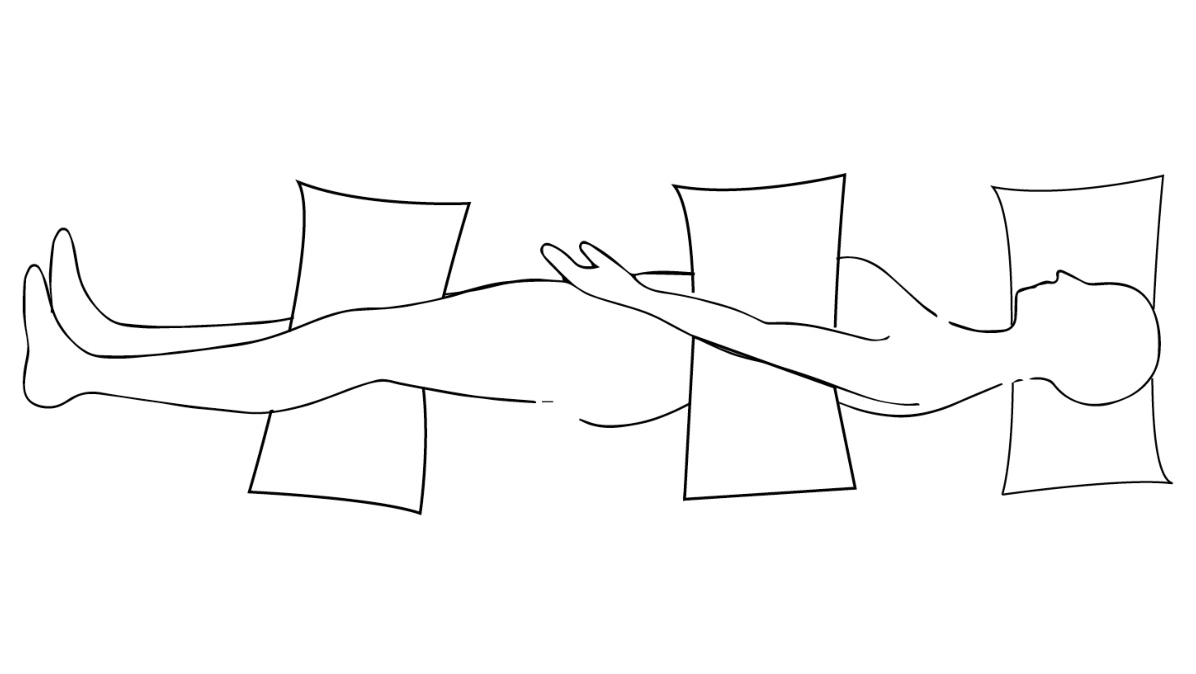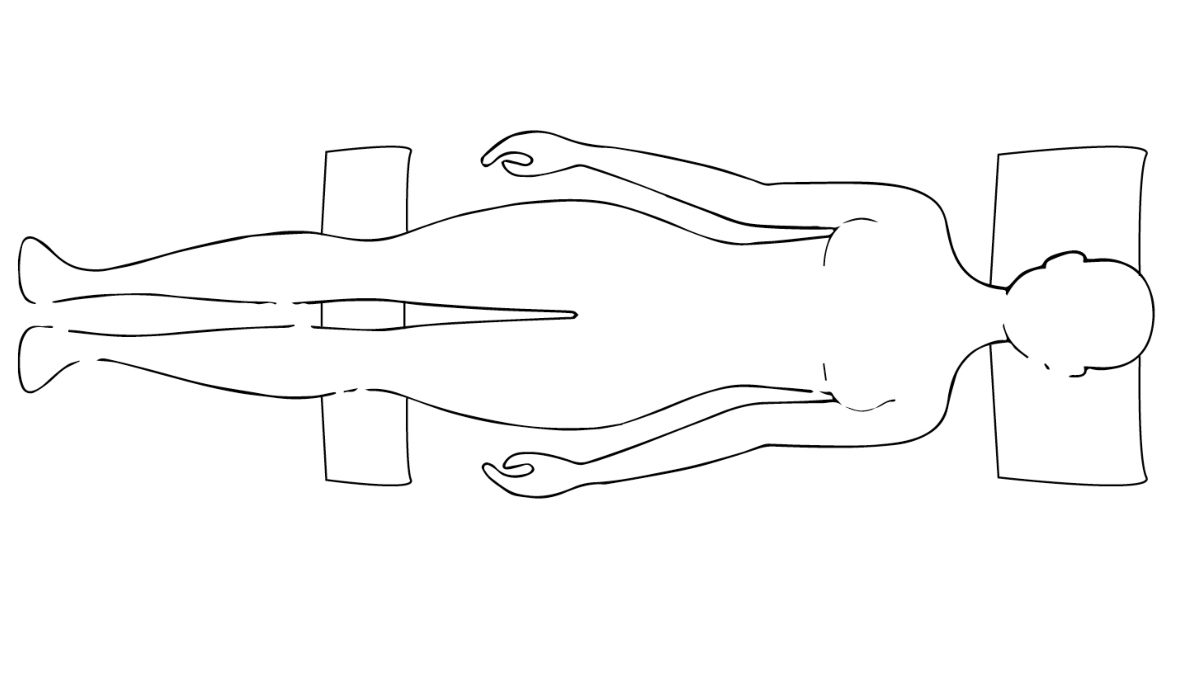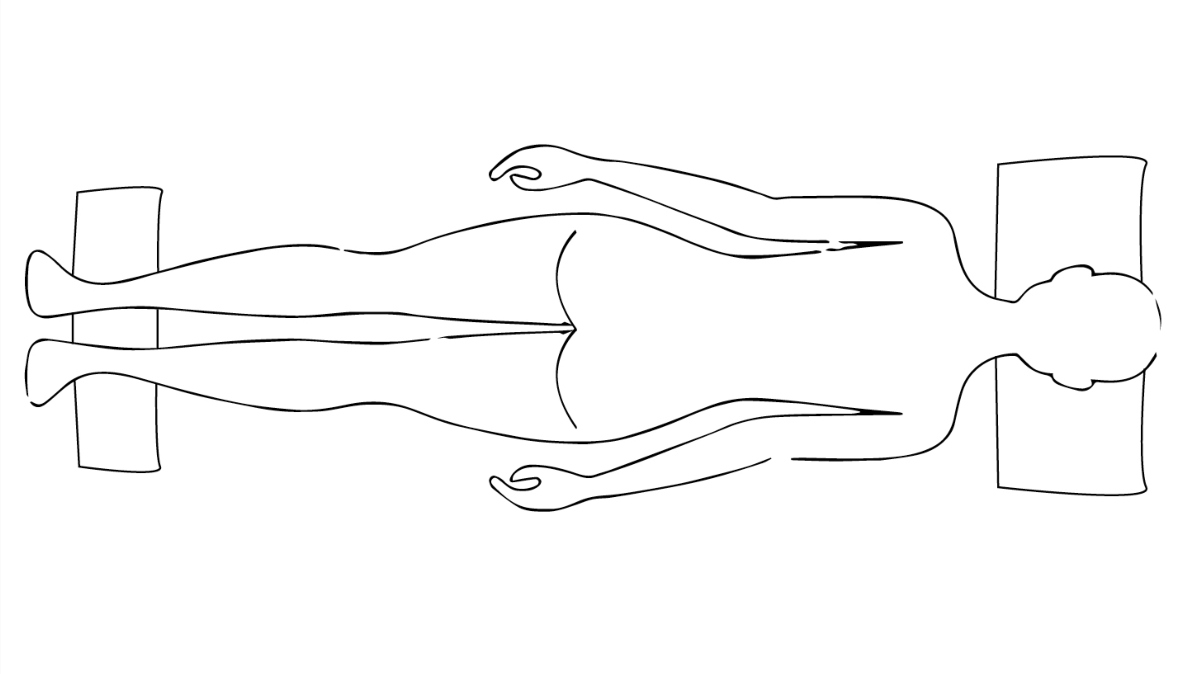Tips for Side, Back, and Stomach Sleepers That Will Ease Your Aches and Pains
Change your sleep habits for the better.

Have you ever wondered why you have pain and tightness in very specific areas of your body? It could have to do with the way you sleep! Many factors affect your sleep quality, from the firmness of your mattress to the angle of your neck. If something is out of place during the night, it could lead to aches and pains in the morning. And sleeping with a few extra pillows might just be the answer.
Sleeping with pillows around your body helps you maintain your preferred sleeping position — stomach, side, or back — while alleviating stress and strain. Certified yoga instructor and author Melanie Salvatore-August believes that pillows can dramatically improve your sleep quality… as long as they are used correctly.
“There are benefits, as well as repetitive stress aches, that can happen with each sleep position,” Salvatore-August tells First for Women. Thus, optimizing your body’s alignment will help you get the best rest possible.
A Side Sleeper’s Guide to Pillows
According to the Sleep Foundation, over 60 percent of people sleep on their side. Research shows that side sleeping promotes a healthy spinal alignment and reduces snoring. Due to the angle of lower esophageal sphincter (LES) and the shape of the stomach, sleeping on your left side may also reduce heartburn.
This position has circulation benefits, too. “Side sleeping can be wonderful for circulation, especially when on the left side of the body,” Salvatore-August confirms. “It shifts body weight off the vena cava, which is the main vein for circulation connecting the upper and lower portions of the body.”
However, side sleepers aren’t without their aches and pains. Without proper support, side sleeping strains the neck, shoulders, and low back. It also makes the knees sore. “With any repetitive stress, the more you do it, the more it hurts!” Salvatore-August says.

To fix these strains, use the support of two or three pillows. Your head pillow should have just enough height to support your neck and keep it at a neutral angle. According to Salvatore-August, a pillow that’s too high or too low changes the curve of the neck and adds strain.
(Tip: Looking for the perfect side-sleeper’s pillow to rest your head? We love the Honeydew Classic Scrumptious Pillow (Buy from Honeydew, $99). It’s an investment, but the high quality, naturally antibacterial material is well worth it. You can even customize your Honeydew pillow by taking out some of the removable foam interior.)
Place one pillow between your knees and one under your upper arm. Or, use one long pillow to support both areas of the body. The pillow under your arm supports the shoulder, while the pillow between your thighs stops you from twisting your pelvis or upper knee.
Test out a few pillows to make sure you are using the right ones, and don’t leave any limbs dangling. A hanging upper arm with no support strains both the shoulder joint and the neck. A collapsed upper leg twists the sacrum and the spine, creating pain in the low back and knees.
Salvatore-August adds a word of caution: “Beware of the upper foot hang dangle!” she exclaims. That means you should never let your ankle and foot dangle off the side of your thigh pillow. “That creates a weighted pull on the hips and low back that will cause low back aches for sure.”
How to Adjust Your Pillows as a Back Sleeper
Side sleeping isn’t the only beneficial position. With proper support, sleeping on your back can improve your spinal alignment and keep your neck in a neutral position. Back sleepers may also have fewer wrinkles, because this position puts no pressure or friction on the face.
Still, back sleepers need to watch out for low back pain and reduced lung capacity. “When not properly supported, the legs can put pressure on the low back and — in some cases — twist the sacrum [and] flatten the neck curve,” Salvatore-August says. “This position naturally adds weight on the back of the lungs, which may limit the lungs’ ability to expand fully and therefore compound stagnation there.”

To alleviate these aches and pains, use pillows to support your neck and low back. “Make sure that the head isn’t too high or too low,” she adds. “Ideally, using a pillow under the head and neck helps create a gently lordotic neck curve, like a rainbow instead of flat.” Salvatore-August also recommends that you avoid neck positions where your chin points up at the ceiling or tips down toward your chest.
You’ll also need some sort of support under your knees to take strain off your lower back. “Place a firm pillow or large bath towel rolled under the knees to lift the thighs a bit and help the low back drop into it’s natural curve,” Salvatore-August suggests.
Just make sure that you don’t place the support too close to your tailbone, which can happen with a large pillow. “That will force a mini tuck in the tail bone and flatten the low back curve, which will create aches and stiffness,” she explains. Instead, push the support closer to your heels. That should help the tail bone drop and therefore reduce strain on the lower back.
How to Optimize Your Position as a Stomach Sleeper
If you think that sleeping on your stomach feels wildly uncomfortable, you’re not alone. Just seven percent of people sleep on their stomachs, making this the least popular position out there. Stomach sleeping can put all kinds of strain on your neck, shoulders, and back, especially if you use a thicker pillow.
Nonetheless, Salvatore-August thinks the stomach position has its benefits. “Tummy sleeping, when practiced in small amounts of time, can be a great way to open the backs of the lungs, improve circulation, [and] shift the nervous system into a relaxation response,” she says. “In fact, one of my favorite ways to de-stress myself and others I am working with is to practice a ‘full complete breath,’ or belly breath, to deeply open the lungs.”

If you tend to sleep on your stomach overnight, you should make a few adjustments to reduce strain. “Balancing out the position of the head is key when you are a tummy sleeper,” Salvatore-August explains. “Which side do you favor? Try to create even time on both sides of the head.”
Along with a thin pillow under your head, a lift under your ankles can alleviate aches as well. “Consider adding a little towel roll underneath the front of the ankles which will create a slight softening of the knees and create more space in the low back,” Salvatore-August says. And if you can, try training your body to sleep on your side or your back instead. It should reduce a lot of stress on your body.













